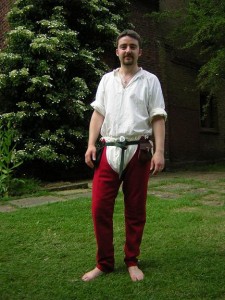 13th/14th Century Single Leg Hose and Braies |
Hose began as simple foot coverings and extended upwards covering more of the leg.
During 13th and much of the 14th century hose were single-legged garments (split hose) with long legged (pipe) braies filling the gap between. Hose fasten directly to the waistband (breech girdle) of the braies. Single leg hose (pair) £75, footed £95 |
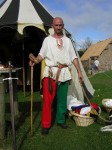 13th/14th Century Single Leg Hose (parti-coloured) |
Related Searches: 13th Century, 14th Century, Menswear
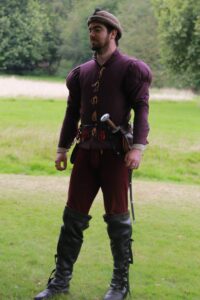 Late 15thC Fashionable Doublet in Wool £215 |
Primarily a garment for holding up your hose, the doublet became increasingly elaborate for those that could afford it. Simple doublets were worn throughout the 15th centuries for lower and working classes.
Simple doublets from £155
Fashionable (mahoitred) doublets from £195 |
 Silk Brocade Doublet £225 |
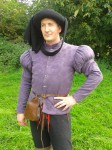 Late 15thC Fashionable Doublet £215 |
 15thC Wool Doublet £155 |
 Linen Doublet £155 |
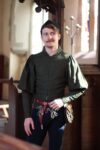 Late 15thC Italian Doublet £215 |
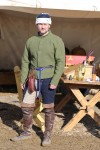 Linen Doublet £155 |
 15thC Wool Doublet |
 15thC Silk Doublet |
 Late 15thC Fashionable Doublet |
 15thC wool doublet |
Related Searches: 15th Century, Doublet, Menswear

15th Century Livery
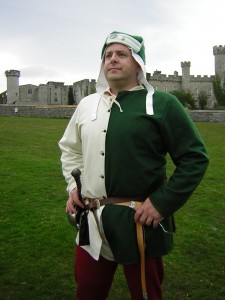
14th Century Doublet and Hat

15th Century Hat
Made in 8 panels giving a double thickness hat that can be made in almost any combination of colours. Many, many in stock.
Price: £15
Related Searches: 15th Century, Menswear
|
Chaperons were derived from the hood and consist of a padded roll, cape (or gorget) and liripipe.
The edge of the gorget was often dagged, a term that means to shred. Wool was felted and then cut into shapes, sometimes extremely elaborate designs. |
|
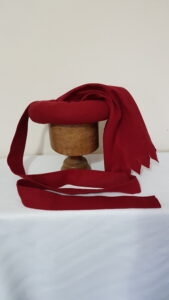 Chaperon |
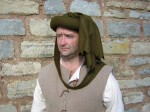 Chaperon  Chaperon |
| Wool chaperon £45 |
|
|
Related Searches: 14th Century, 15th Century, Menswear


















